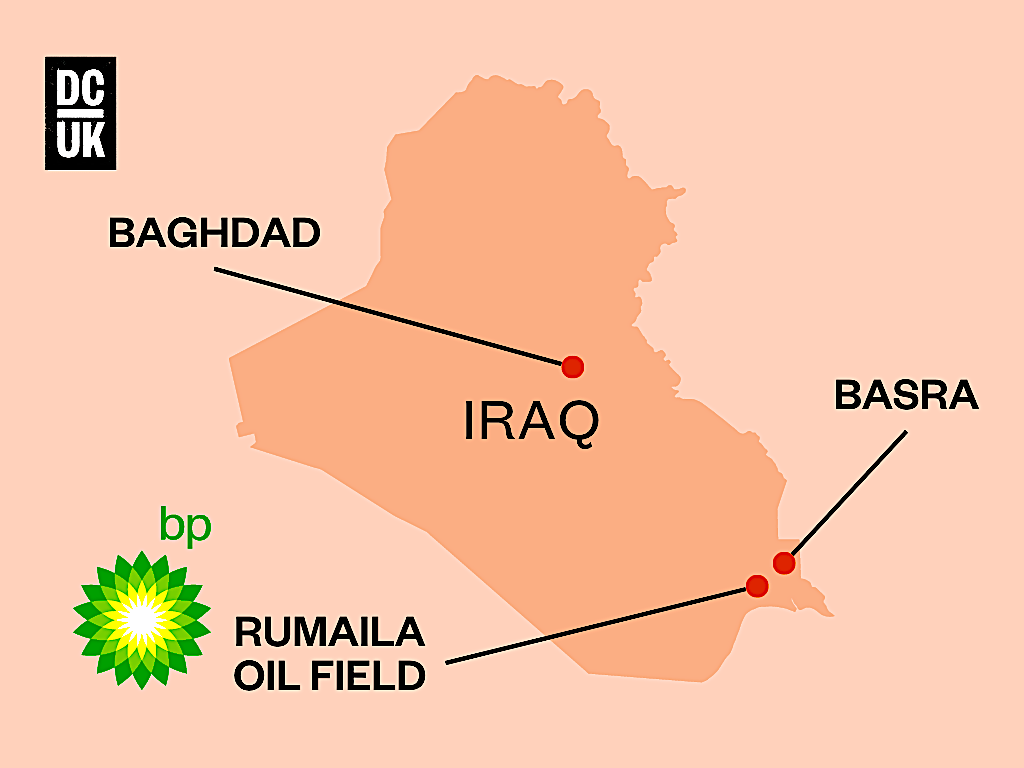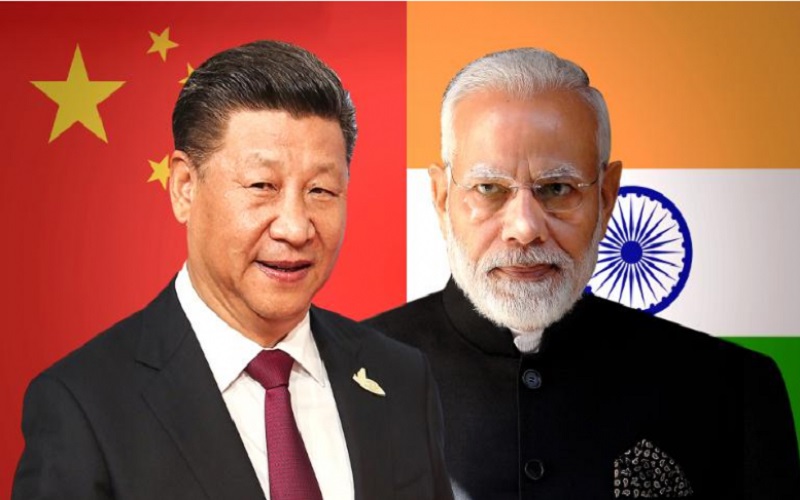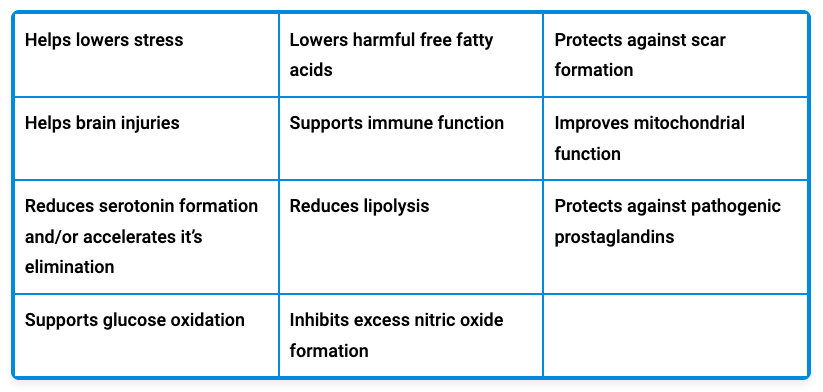40 Facts You Need to Know: The Real Story of “COVID”
March 27th, 2023 by Kit Knightly
All Global Research articles can be read in 51 languages by activating the Translate Website button below the author’s name.
To receive Global Research’s Daily Newsletter (selected articles), click here.
Follow us on Instagram and Twitter and subscribe to our Telegram Channel. Feel free to repost and share widely Global Research articles.
***
We first published our hugely popular cribsheet in September of 2021 in response to dozens – even hundreds – of reader requests for sources and data. It was intended as a resource and link dump as much as an article, and intentionally free of interpretation, editorialising or opinion.
The response was incredible, within weeks it became our most-viewed article of all time, and it has maintained steady traffic ever since.
But time moves on, and as new data was published and new facts came to light, it became clear we needed to update the piece – not just in terms of facts, but in terms of approach.
So, here are all the updated key facts and sources concerning the alleged “pandemic”, to help you get a grasp on what has happened to the world since January 2020, and assist in the enlightenment of any of your friends who might be still trapped in the New Normal fog.
Part I: Symptoms
NEW!1. “Covid19” and the flu have IDENTICAL symptoms.There are no symptoms or collections of symptoms unique or specific to “Covid” and only “Covid”. All “Covid” symptoms are common to many other diseases and conditions, including the collection of common respiratory infections colloquially known as “the flu”.
This is readily admitted by mainstream sources and “experts”, who routinely describe “Covid” symptoms as “flu like”.
According to the US Center for Disease Control’s own website comparing “Covid” and the flu:
You cannot tell the difference between flu and COVID-19 just by looking at the symptoms alone because they have some of the same symptoms.
While the UK’s NHS states:
The symptoms [of Covid] are very similar to symptoms of other illnesses, such as colds and flu.
While all mainstream sources couch the admission in soft language – “some of the same symptoms”, “very similar” – the truth is the symptoms are identical. The only points of difference ever observed are equivocations on severity and onset time.
This article from Health Partners highlights that “Covid” can be both more severe OR milder than the flu, noting that “Covid” can sometimes “feel more like a cold”
While according to the Mayo Clinic, in their article on “Covid” vs the flu, the only difference in symptoms is that they “appear at different times”.
*
2. “Ground glass opacities” are NOT unique to “Covid”. Early in the pandemic, it was reported that medical imaging revealed what they call “ground glass opacity” in the lungs of suspected “Covid” cases and that this was being used to diagnose patients, but ground glass anomalies are not unique to “Covid”.
According to a German paper published in the Radiologie journal in 2010:
Ground glass opacity (GGO) is defined as diffuse pulmonary infiltration [which can be caused by] edema, airspace and interstitial pneumonia. non-infectious pneumonitis as well as tumor manifestations. Physiological processes, such as poor ventilation of dependent lung areas and effects of expiration can also present as ground glass opacity.
In 2012 the Journal of Respiratory Care published a paper on “The Imaging of Acute Respiratory Distress Syndrome” which described GGOs thus [emphasis added]:
Ground-glass opacification on CT is a non-specific sign that reflects an overall reduction in the air content of the affected lung
In 2022, the Lancet published a case study from an Indian doctor literally titled “Ground glass opacities are not always COVID-19”.
Another article, published by Health.com in May 2022, underlines that:
Ground-glass opacities (GCOs) aren’t specific to COVID-19 […] they can show up due to other conditions and infections
In short, GGOs are a common presentation of pulmonary illness or injury, and are associated with pneumonia, pneumonitis, tuberculosis, and many other conditions.
*
3. A loss of smell and taste is NOT unique to “covid”. As with GGOs, it has been widely reported that a loss of the sense of taste and sense of smell is the telltale sign of “Covid”, but that is a known symptom of many upper respiratory infections.
According to a 2001 article published on the website of the Univerity of Connecticut School of Medicine:
In adults, the two most common causes of smell problems that we see at our Clinic are: (1) Smell loss due to an ongoing process in the nose and/or sinuses such as nasal allergies and (2) smell loss due to injury of the specialized nerve tissue at the top of the nose (or possibly the higher smell pathways in the brain) from a previous viral upper respiratory infection.
Many common medical conditions are known to cause both acute and chronic damage to the sense of smell and taste, according to the UK’s NHS:
Changes in sense of smell are most often caused by a cold or flu, sinusitis (sinus infection) [or] allergies (like hay fever)
*
Part II: Diagnosis and PCR Tests
4. It is not possible to clinically diagnose “Covid19”.Clinical diagnosis is the practice of diagnosing a disease based on a unique symptom or collection of symptoms. Wiktionary defines it as:
The estimated identification of the disease underlying a patient’s complaints based merely on signs, symptoms and medical history of the patient rather than on laboratory examination or medical imaging.
Since “Covid19” has no unique symptomatic profile[1], and since ALL major symptoms of “Covid” can potentially apply to literally every common respiratory infection, it is impossible to diagnose “Covid19” based on symptoms.
*
5. Lateral flow tests are unreliable. Throughout the “pandemic” the most frequently used “self-test” for “Covid” were Lateral Flow Tests (LFTs). These tests are highly unreliable, and known to return positive test results from household liquids such as fruit juice and soda.
Children in the UK frequently “broke” their LFTs using vinegar or coca-cola in order to create false-positive tests and get a few days off school.
In February 2022, an “expert” told The Guardian that LFTs could create false positives based on the diet of the person being tested, or through “cross-reacting” with a different virus.
In February 2022, it was also reported by a team of “experts” from Imperial College that LFTs can “miss” infectious people. In other words, the official position is that LFTs produce false negative results AND false positive results.
Further, it is acknowledged – and the subject of explainer articles – that LFT and PCR results will often contradict one another. Meaning you can test positive on one, but not the other.
In short, lateral flow tests are of almost no diagnostic value whatsoever.
*
6. PCR tests were not designed to diagnose illness. The Reverse-Transcriptase Polymerase Chain Reaction (RT-PCR) test is described in the media as the “gold standard” for “Covid” diagnosis.
But Kary Mullis, the Nobel Prize-winning inventor of the process, never intended it to be used as a diagnostic tool and said so publicly:
PCR is just a process that allows you to make a whole lot of something out of something. It doesn’t tell you that you are sick, or that the thing that you ended up with was going to hurt you or anything like that.”
*
7. PCR Tests have a history of being inaccurate and unreliable. The “gold standard” PCR tests for “Covid” are known to produce a lot of false-positive results, by reacting to DNA material that is not specific to Sars-Cov-2.
A Chinese study found the same patient could get two different results from the same test on the same day. In Germany, tests are known to have reacted to common cold viruses. Some tests in the US even reacted to the negative control sample.
The late President of Tanzania, John Magufuli, submitted samples of goat, pawpaw and motor oil for PCR testing, all came back positive for the virus.
As early as February of 2020 experts were admitting the test was unreliable. Dr Wang Cheng, president of the Chinese Academy of Medical Sciences told Chinese state television “The accuracy of the tests is only 30-50%”. The Australian government’s own website claimed “There is limited evidence available to assess the accuracy and clinical utility of available COVID-19 tests.” And a Portuguese court ruled that PCR tests were “unreliable” and should not be used for diagnosis.
The unreliability of PCR tests is not unique to “Covid”, either. A 2006 study found PCR tests for one virus responded to other viruses too. In 2007, reliance on PCR tests resulted in an “outbreak” of Whooping Cough that never actually existed.
You can read detailed breakdowns of the failings of PCR tests here, here and here.
*
8. The CT values of the PCR tests are too high. PCR tests are run in cycles, the number of cycles you use to get your result is known as your “cycle threshold” or CT value. Kary Mullis said: “If you have to go more than 40 cycles[…]there is something seriously wrong with your PCR.”
The MIQE PCR guidelines agree, stating: “[CT] values higher than 40 are suspect because of the implied low efficiency and generally should not be reported”.
Dr Fauci himself even admitted anything over 35 cycles is almost never culturable.
Dr Juliet Morrison, virologist at the University of California, Riverside, told the New York Times: Any test with a cycle threshold above 35 is too sensitive…I’m shocked that people would think that 40 [cycles] could represent a positive…A more reasonable cutoff would be 30 to 35″.
In the same article Dr Michael Mina, of the Harvard School of Public Health, said the limit should be 30, and the author goes on to point out that reducing the CT from 40 to 30 would have reduced “covid cases” in some states by as much as 90%.
The CDC’s own data suggests no sample over 33 cycles could be cultured, and Germany’s Robert Koch Institute says nothing over 30 cycles is likely to be infectious.
Despite this, it is known almost all the labs in the US are running their tests at least 37 cycles and sometimes as high as 45. The NHS “standard operating procedure” for PCR tests rules set the limit at 40 cycles.
Based on what we know about the CT values, the majority of PCR test results are at best questionable.
*
9. The World Health Organization (Twice) Admitted PCR tests produced false positives. In December 2020 WHO put out abriefing memo on the PCR process instructing labs to be wary of high CT values causing false positive results:
when specimens return a high Ct value, it means that many cycles were required to detect virus. In some circumstances, the distinction between background noise and actual presence of the target virus is difficult to ascertain.
Then, in January 2021, the WHO released another memo, this time warning that “asymptomatic” positive PCR tests should be re-tested because they might be false positives:
Where test results do not correspond with the clinical presentation, a new specimen should be taken and retested using the same or different NAT technology.
These announcements coincided with the initial launch of the “covid vaccines”.
*
10. The scientific basis for ALL “Covid” tests is questionable.The genome of the Sars-Cov-2 virus was supposedly sequenced by Chinese scientists in December 2019, then published on January 10th 2020. Less than two weeks later, German virologists (Christian Drosten et al.) had allegedly used the genome to create assays for PCR tests.
They wrote a paper, Detection of 2019 novel coronavirus (2019-nCoV) by real-time RT-PCR, which was submitted for publication on January 21st 2020, and then accepted on January 22nd. Meaning the paper was allegedly “peer-reviewed” in less than 24 hours. A process that typically takes weeks.
Since then, a consortium of over forty life scientists has petitioned for the withdrawal of the paper, writing a lengthy report detailing 10 major errors in the paper’s methodology.
They have also requested the release of the journal’s peer-review report, to prove the paper really did pass through the peer-review process. The journal has yet to comply.
The Corman-Drosten assays are the root of every “Covid” PCR test in the world. If the paper is questionable, every PCR test is also questionable.
*
Part III: “Cases” and “Deaths”
11. Huge numbers of “Covid cases” are “asymptomatic”.Early in the “pandemic” it was reported that the majority of “Covid cases” never exhibited any symptoms. In March 2020, studies done in Italy were suggesting 50-75% of positive Covid tests had no symptoms. Another UK study from August 2020 found as much as 86% of “Covid patients” experienced no viral symptoms at all.
A Chinese paper from March 2020 found over 80% of “asymptomatic cases” were actually false positive test results.
In short, the vast majority of “cases” during the first year of the “pandemic” were people who never got sick at all.
Following a WHO directive to re-test asymptomatic cases [9] in January 2021 – just as the “vaccines” were first rolled out – the percentage of “asymptomatic cases” has been reportedly lower, approximately 40%.
*
12. “Covid case” numbers are inherently meaningless.From the onset of the “pandemic”, a “Covid case” has been defined in terms guaranteed to artificially inflate statistics.
The World Health Organization’s definition of a “confirmed case” is anyone who gets a positive PCR result, regardless of symptoms or personal history. Further, it is known that many health agencies around the world – including the US CDC – include “probable cases” in their statistics.
The WHO defines a “probable case” as anyone who meets the “clinical criteria” (ie has flu-like symptoms) and has been in contact either a “confirmed case” OR another “probable case”:
Probable Case: A patient who meets clinical criteria AND is a contact of a probable or confirmed case, or linked to a COVID-19 cluster.”
As established above, PCR tests do not work and produce false positives. Lateral flow tests also produce false positives. It is known these tests may even give contradictory results for the same person at the same time. “Covid19” also lacks a unique symptom profile, ruling out clinical diagnosis.
If you cannot reliably test for the disease in a lab, and cannot identify it via a unique symptom profile, and many “cases” are recognised as “asymptomatic”, then “Covid19” becomes a label with no meaning.
Absent any kind of reliable diagnostic method, case statistics for any disease are inherently meaningless.
*
13. “Covid deaths” were created by statistical manipulation.Since “Covid” case statistics are inflated [12] it naturally follows that “Covid” death statistics would be likewise unreliable. In fact it was noted from the very beginning of the “pandemic” that “Covid death” counts were being artificially inflated.
According to the UK’s Health Standards Agency, the WHO defined a “Covid death” in the following terms:
A COVID-19 death is defined for surveillance purposes as a death resulting from a clinically compatible illness in a probable or confirmed COVID-19 case, unless there is a clear alternative cause of death that cannot be related to COVID-19 disease (eg. trauma).
Throughout the “pandemic” many countries around the globe went even further and defined a “Covid death” as a “death by any cause within 28/30/60 days of a positive test”.
Healthcare officials from Denmark, Italy, Germany, the UK, US, Northern Ireland and others have all admitted to this practice:
The US CDC even records “probable” Covid deaths in their statistics.
Removing any distinction between dying of “Covid”, and dying of something else after testing positive for Covid will naturally lead to completely meaningless numbers of “Covid deaths”.
British pathologist Dr John Lee was warning of this “substantial over-estimate” as early as April 2020. Other mainstream sources have reported it, too.
Considering the huge percentage of “asymptomatic Covid infections” [11], the well-known prevalence of serious comorbidities [30] and the fact all “Covid tests” are entirely unreliable [II], this renders the “Covid” death numbers a completely meaningless statistic.
*
Part IV: Lockdowns
14. Lockdowns do not prevent the spread of disease. There is little to no evidence lockdowns have any impact on limiting “Covid deaths”. If you compare regions that locked down to regions that did not, you can see no pattern at all.
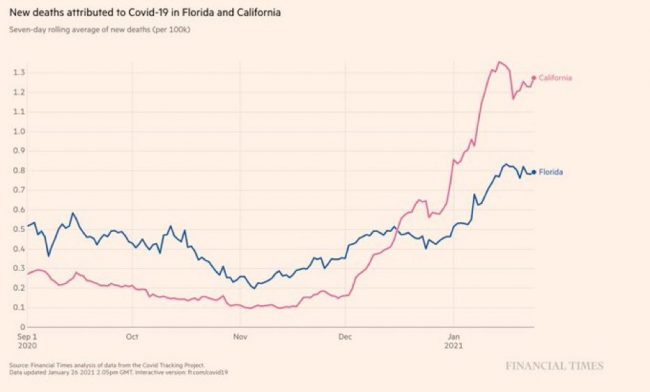
“Covid deaths” in Florida (no lockdown) vs California (lockdown)
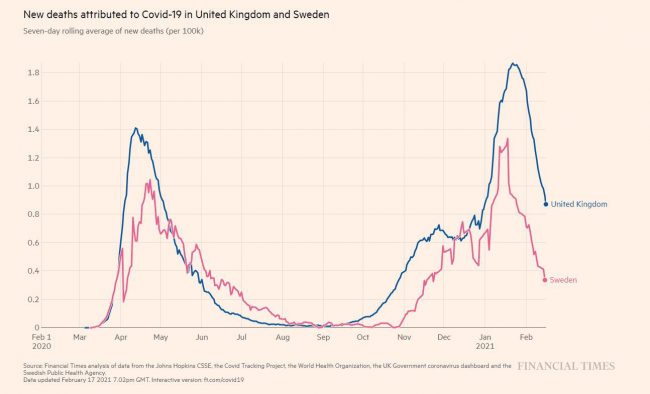
“Covid deaths” in Sweden (no lockdown) vs UK (lockdown)
A pre-print meta-analysis from Johns Hopkins University found lockdowns had almost no impact at all on “Covid19” mortality, while another paper on the “Determinants of COVID-19 Fatalities”published in April of 2021 found:
little evidence that lockdowns reduced fatalities
*
15. Lockdowns kill people. There is strong evidence that lockdowns – through social, economic and other public health damage – are deadlier than the alleged “virus”.
Dr David Nabarro, World Health Organization special envoy for Covid-19 described lockdowns as a “global catastrophe” in October 2020:
We in the World Health Organization do not advocate lockdowns as the primary means of control of the virus[…] it seems we may have a doubling of world poverty by next year. We may well have at least a doubling of child malnutrition […] This is a terrible, ghastly global catastrophe.”
A UN report from April 2020 warned of 100,000s of children being killed by the economic impact of lockdowns, while tens of millions more face possible poverty and famine.
Unemployment, poverty, suicide, alcoholism, drug use and other social/mental health crises are spiking all over the world. While missed and delayed surgeries and screenings have already seen increased mortality from heart disease, cancer and other conditions in many countries around the world.
A World Bank report from June 2021 estimated close to 100 million people had been plunged extreme poverty by so-called “anti-Covid measures”.
As of January 2023, healthcare services the world over are still experiencing chaotic backlogs in treatment and diagnosis. The knock-on effects of lockdown will likely hurt public health for years.
The impact of lockdown could account for any observed increases in excess mortality.[33]
*
16. Babies born during lockdown have lower IQs. A study done at Brown University found that children born after March 2020 had, on average, IQs 21 points lower than previous generations, concluding:
questions remain regarding the impact of the work-from-home, shelter-in-place, and other public health policies that have limited social interaction and typical childhood experiences on early child neurodevelopment.
This mirrors reports in older children (aged 4-5) of stunted development of social skills and inability to read facial cues.
*
17. Hospitals were never unusually overburdened. The main argument used to defend lockdowns is that “flattening the curve” would prevent a rapid influx of cases and protect healthcare systems from collapse. But most healthcare systems were never close to collapse at all.
In March 2020 it was reported that hospitals in Spain and Italy were overflowing with patients, but this happens every flu season. In 2017 Spanish hospitals were at 200% capacity, and 2015 saw patients sleeping in corridors. A JAMA paper from March 2020 found that Italian hospitals “typically run at 85-90% capacity in the winter months”.
In the UK, the NHS is regularly stretched to breaking point over the winter.
As part of their Covid policy, the NHS announced in Spring of 2020that they would be “re-organizing hospital capacity in new ways to treat Covid and non-Covid patients separately” and that “as a result hospitals will experience capacity pressures at lower overall occupancy rates than would previously have been the case.”
This means they removed thousands of beds.
Yes, during an alleged deadly pandemic, they actually reduced the maximum occupancy of hospitals.
Despite this, the NHS never felt pressure beyond your typical flu season, and at times actually had 4x more empty beds than normal.
In both the UK and US millions were spent on temporary emergency hospitals that were never used.
An article in Health Policy in November 2021 found that, in all of Western Europe, the “surge capacity” of ICU beds was exceeded for only one day – in Lombardy on April 3rd 2020.
*
18. There was a massive increase in the use of “unlawful” DNRs. Watchdogs and government agencies reported huge increases in the use of Do Not Resuscitate Orders (DNRs) in the years 2020-2021.
As early as March 2020, when the “pandemic” was still in its early stages, there were already papers appearing in mainstream journals predicting “unilateral” DNR usage, something which had “rarely had a role prior to Covid”:
clinicians in some health care settings may unilaterally decide to write a DNR order. This latter approach is not uniformly accepted and, prior to COVID-19, it rarely had a role. During this pandemic, however, in extreme situations such as a patient with severe underlying chronic illness and acute cardiopulmonary failure who is getting worse despite maximal therapy, there may be a role for a unilateral DNR to reduce the risk of medically futile CPR to patients, families, and health care workers.
In the US, hospitals considered “universal DNRs” for any patient who tested positive for Covid, and whistleblowing nurses have admitted the DNR system was abused in New York.
In the UK there was an “unprecedented” rise in “illegal” DNRs for disabled people, GP surgeries sent out letters to non-terminal patients recommending they sign DNR orders, whilst other doctors signed “blanket DNRs” for entire nursing homes.
A study done by Sheffield University found over one-third of all “suspected” Covid patients had a DNR attached to their file within 24 hours of hospital admission.
A paper published in the journal “Public Health Frontiers” in May 2021, made the “ethical” case for “unilateral” use of DNRs in Covid patients:
Some countries were forced to adopt a unilateral DNR policy for certain patient groups […] In the current difficult situation…difficult decisions are to be made. Societal rather than individual benefits might prevail.
Blanket use of coerced or illegal DNR orders could account for any increases in mortality in 2020/21.[33]
*
Part V: Ventilators
19. Ventilation is NOT a treatment for respiratory infections. Mechanical ventilation is not, and never has been, recommended treatment for respiratory infection of any kind. In the early days of the pandemic, many doctors came forward questioning the use of ventilators to treat “Covid”.
Writing in The Spectator, Dr Matt Strauss stated:
Ventilators do not cure any disease. They can fill your lungs with air when you find yourself unable to do so yourself. They are associated with lung diseases in the public’s consciousness, but this is not in fact their most common or most appropriate application.
German Pulmonologist Dr Thomas Voshaar, chairman of the Association of Pneumatological Clinics said:
When we read the first studies and reports from China and Italy, we immediately asked ourselves why intubation was so common there. This contradicted our clinical experience with viral pneumonia.
Despite this, the WHO, CDC, ECDC and NHS all “recommended” Covid patients be ventilated instead of using non-invasive methods.
This was not a medical policy designed to best treat the patients, but rather to reduce the hypothetical spread of Covid by preventing patients from exhaling aerosol droplets, this was made clear in officially published guidelines.
*
20. Ventilators kill people. Putting someone on a ventilator who is suffering from influenza, pneumonia, chronic obstructive pulmonary disease, or any other condition which restricts breathing or affects the lungs, will not alleviate any of those symptoms. In fact, it will almost certainly make it worse, and will kill many of them.
Intubation tubes are a potential source of an infection known as “ventilator-associated pneumonia”, which studies show affects up to 28% of all people put on ventilators, and kills 20-55% of those infected.
Mechanical ventilation is also damaging to the physical structure of the lungs, resulting in “ventilator-induced lung injury”, which can dramatically impact quality of life, and even result in death.
Experts estimate 40-50% of ventilated patients die, regardless of their disease. Around the world, between 66 and 86% of all “Covid patients”put on ventilators died.
According to the “undercover nurse”, ventilators were being used so improperly in New York, they were destroying patients’ lungs:
This policy was negligence at best and potentially deliberate murder at worst. This misuse of ventilators could account for any increase in mortality in 2020/21 [33]
*
Part VI: Masks
21. Masks don’t work. At least a dozen scientific studies have shown that masks do nothing to stop the spread of respiratory viruses.
One meta-analysis published by the CDC in May 2020 found “no significant reduction in influenza transmission with the use of face masks”.
A Canadian review from July 2020 found “limited evidence that the use of masks might reduce the risk of viral respiratory infections”.
Another study with over 8000 subjects found masks “did not seem to be effective against laboratory-confirmed viral respiratory infections nor against clinical respiratory infection.”
There are literally too many to quote them all, but you can read them: [1][2][3][4][5][6][7][8][9][10] Or read a summary by SPR here.
While some studies have been done claiming to show mask do work for Covid, they are all seriously flawed. One relied on self-reported surveys as data. Another was so badly designed that a panel of experts demanded it be withdrawn. A third was withdrawn after its predictions proved entirely incorrect.
The WHO commissioned its own meta-analysis in the Lancet, but that study looked only at N95 masks and only in hospitals. [For a full rundown on the bad data in this study click here.]
Aside from scientific evidence, there’s plenty of real-world evidence that masks do nothing to halt the spread of disease.
For example, North Dakota and South Dakota had near-identical “case” figures, despite one having a mask mandate and the other not:
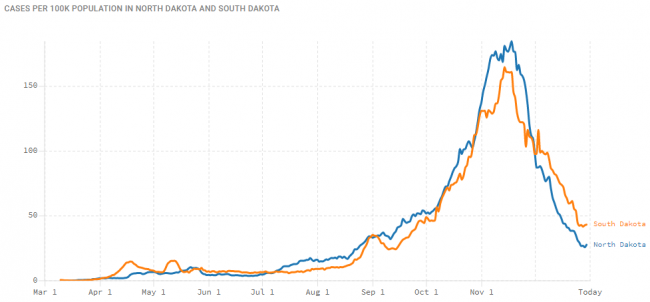
In Kansas, counties without mask mandates actually had fewer Covid “cases” than counties with mask mandates. And despite masks being very common in Japan, they had their worst flu outbreak in decades in 2019.
Not only do masks not work, but it was widely known they did not work before 2020.
A 2016 literature review published in the Journal of Oral Health found:
there are no convincing scientific data that support the effectiveness of masks for respiratory protection.
(This study was quietly removed from the journal’s website in June 2020, because it was “no longer relevant in the current climate”.)
Another study, published in 2020 but carried out in 2019, found:
no significant effect of face masks on transmission of laboratory-confirmed influenza.
In his 2020 review, “Masks Don’t Work”, Dr Denis Rancourt cites studies from 2009, 2010, 2012, 2016, 2017 and 2019…none of which found any significant benefit at all from wearing a mask.
And, most tellingly, in their own report on influenza from 2019, the WHO itself noted that:
there is no evidence that [masks are] effective in reducing transmission
*
22. Masks are bad for your health. Wearing a mask for long periods, wearing the same mask more than once, and other aspects of cloth masks can be bad for your health. A long study on the detrimental effects of mask-wearing was recently published by the International Journal of Environmental Research and Public Health
Dr. James Meehan reported in August 2020 he was seeing increases in bacterial pneumonia, fungal infections, and facial rashes.
Masks are also known to contain plastic microfibers, which damage the lungs when inhaled and may be potentially carcinogenic.
Childen wearing masks encourages mouth-breathing, which results in facial deformities.
People around the world have passed out due to CO2 poisoning while wearing their masks, and some children in China even suffered sudden cardiac arrest.
Moreover, masks may actually increase the likelihood of respiratory disease, a trial of cloth masks from 2015 found that:
Moisture retention, reuse of cloth masks and poor filtration may result in an increased risk of infection.
While a new study published in July 2022 found that masks, especially those worn more than once, were breeding grounds for both bacteria and fungal microbes.
Another peer-reviewed paper on mask effectiveness, from April 2022, found:
While no cause-effect conclusions could be inferred from this observational analysis, the lack of negative correlations between mask usage and COVID-19 cases and deaths suggest that the widespread use of masks […] was not able to reduce COVID-19 transmission. Moreover, the moderate positive correlation between mask usage and deaths in Western Europe also suggests that the universal use of masks may have had harmful unintended consequences.
*
23. Masks are bad for the planet. Millions upon millions of disposable masks have been used per month for over a year. A report from the UN found the Covid19 pandemic will likely result in plastic waste more than doubling in the next few years., and the vast majority of that is face masks.
The report goes on to warn these masks (and other medical waste) will clog sewage and irrigation systems, which will have knock-on effects on public health, irrigation and agriculture.
A study from the University of Swansea found “heavy metals and plastic fibres were released when throw-away masks were submerged in water.” These materials are toxic to both people and wildlife.
Another study, published in 2022, found that:
disposable face masks and plastic gloves could pose an ongoing risk to wildlife for tens if not hundreds of years.
*
Part VII: Vaccines
24. Covid “vaccines” are totally unprecedented. Before 2020 no successful vaccine against a human coronavirus had ever been developed.
Following the advent of “Covid”, we allegedly made over 20 of them in 18 months.
Scientists have been trying to develop a SARS and MERS vaccine for years with little success. Some of the failed SARS vaccines actually caused hypersensitivity to the SARS virus. Meaning that vaccinated mice could potentially get the disease more severely than unvaccinated mice. Another attempt caused liver damage in ferrets.
Whereas the theory behind traditional vaccines is that exposing the body to a weakened strain of a microorganism will trigger an immune response, many of these new Covid “vaccines” are mRNA vaccines.
mRNA (messenger ribonucleic acid) vaccines theoretically work by injecting viral mRNA into the body, where it replicates inside your cells and encourages your body to recognise, and make antigens for, the “spike proteins” of the virus.
mRNA vaccines have been the subject of research since the 1990s, but before 2020 no mRNA vaccine was ever approved for use on humans.
Yet, following the advent of Covid, two different companies made two supposedly “safe and effective” mRNA vaccines within weeks of each other.
*
25. “Covid vaccines” do not confer immunity or prevent transmission. It is readily admitted that Covid “vaccines” do not confer immunity from infection and do not prevent you from passing the disease onto others. Indeed, an article in the British Medical Journal highlighted that the vaccine trials were not designed to even try and assess if the “vaccines” limited transmission.
The vaccine manufacturers themselves, upon releasing the untested mRNA gene therapies, were quite clear their product’s “efficacy” was based on “reducing the severity of symptoms”.
In October 2022 Pfizer executive Janine Small, testifying in front of the EU parliament, admitted that Pfizer never even tested if their vaccine prevented transmission of “Covid” prior to its release to the public.
*
26. The vaccines were rushed and have unknown long-term effects. Vaccine development is a slow, laborious process. Usually, from development through testing and finally being approved for public use takes many years. The various vaccines for Covid were all developed and approved in less than a year.
Moderna’s own website admits “it normally takes 10-15 years to develop a vaccine”, but boasts of producing their SpikeVax “within 2 months”
Obviously, there can be no long-term safety data on chemicals that are less than a year old.
Pfizer even admits this is true in the leaked supply contract between the pharmaceutical giant, and the government of Albania:
the long-term effects and efficacy of the Vaccine are not currently known and that there may be adverse effects of the Vaccine that are not currently known
Further, none of the vaccines have been subject to proper trials. Many of them skipped early-stage trials entirely, and the late-stage human trials have either not been peer-reviewed, have not released their data, will not finish until 2023 or were abandoned after “severe adverse effects”.
*
27. Vaccine manufacturers have been granted legal indemnity should they cause harm. The USA’s Public Readiness and Emergency Preparedness Act (PREP) grants immunity until at least 2024.
The EU’s product licensing law does the same, and there are reports of confidential liability clauses in the contracts the EU signed with vaccine manufacturers.
The UK went even further, granting permanent legal indemnity to the government, and any employees thereof, for any harm done when a patient is being treated for Covid19 or “suspected Covid19”.
Again, the leaked Albanian contract suggests that Pfizer, at least, made this indemnity a standard demand of supplying Covid vaccines:
Purchaser hereby agrees to indemnify, defend and hold harmless Pfizer […] from and against any and all suits, claims, actions, demands, losses, damages, liabilities, settlements, penalties, fines, costs and expenses
*
28. Covid “vaccines” carry a significant risk of adverse side effects. The experimental Covid vaccines have potentially caused dozens of severe conditions in millions of people. These include myocarditis (especially in young boys), blood clots, allergic reactions, skin conditions, Bell’s Palsy, menstrual irregularities and more. [For a detailed breakdown of these conditions, click here]
The US CDC’s Vaccine Adverse Event Reporting System (VAERS) has received twice as many reports since the covid vaccine rollout than all previous years combined.
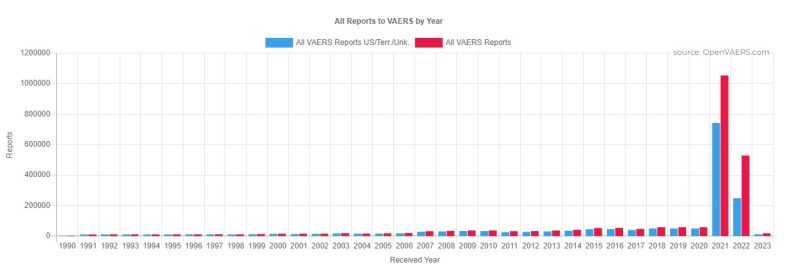
Source: OpenVAERS
Part VIII: Mortality Data
29. The survival rate of “Covid” is over 99%. Government medical experts went out of their way to underline, from the beginning of the pandemic, that the vast majority of the population are not in any danger from Covid.
A new global review of Covid data, published in October 2022 by Stanford epidemiologist John Ioannidis (et al) found a median fatality rate of just 0.07% in people younger than 70 years old.
Almost all antibody studies on the infection-fatality ratio (IFR) of Covid have returned results between 0.04% and 0.5%. Meaning, assuming for a moment that “covid” ever existed as a discrete disease at all, its survival rate was at least 99.5%.
*
30. The vast majority of “covid deaths” have serious comorbidities. In March 2020, the Italian government published statistics showing 99.2% of their “Covid deaths” had at least one serious comorbidity.
These included cancer, heart disease, dementia, Alzheimer’s, kidney failure and diabetes (among others). Over 50% of them had three or more serious pre-existing conditions.
This pattern has held up in all other countries over the course of the “pandemic”. An October 2020 FOIA request to the UK’s ONS revealed less than 10% of the official “Covid death” count at that time had Covid as the sole cause of death.
In summary, the vast majority of “Covid deaths” were very frail people.
This was interpreted by the press as old age or infirmity being “risk factors” for “Covid”. However, it could be more accurately said that the number one risk factor for “dying of covid” was already dying of something else.
*
31. Average age of “Covid death” is greater than the average life expectancy. The average age of a “Covid death” in the UK is 82.5 years. In Italy, it’s 86. Germany, 83. Switzerland, 86. Canada, 86. The US, 78, Australia, 82.
In almost all cases the median age of a “Covid death” is higher than the national life expectancy.
Research from March 2021 found that, across the eight studied countries, more than 64% of all “Covid deaths” occurred in people over the national life expectancy.
As such, for most of the world, the “pandemic” had little-to-no impact on life expectancy. Contrast this with the Spanish flu, which saw a 28% drop in life expectancy in the US in just over a year. [source]
*
32. Covid mortality exactly mirrors the natural mortality curve. Statistical studies from the UK and India have shown that the curve for “Covid death” follows the curve for expected mortality almost exactly:

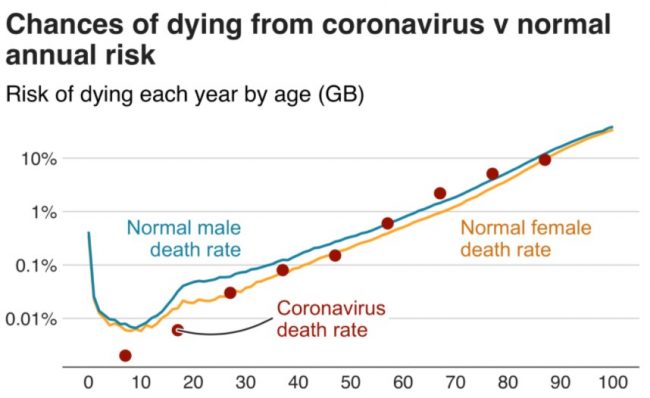
The risk of death “from Covid” follows, almost exactly, your background risk of death in general.
The small increase for some of the older age groups can be accounted for by other factors.[15][18][20][28]
*
33. There has been NO unusual excess mortality. The global death toll of “Covid”, even with exaggerated statistics [13], was never high enough to justify the draconian responses we saw from most world governments.
In three years of “covid”, there have been roughly 6.8 million “Covid deaths”, or 2.3 million per year. That’s 0.03% of the global population. For comparison’s sake, the Spanish Flu of 1918 killed 25-100 million people in two years, or between 0.7 and 2.8% of the global population per year.
The press has called 2020 the UK’s “deadliest year since world war two”, but this is misleading because it ignores the massive increase in the population since that time. A more reasonable statistical measure of mortality is Age-Standardised Mortality Rate (ASMR):
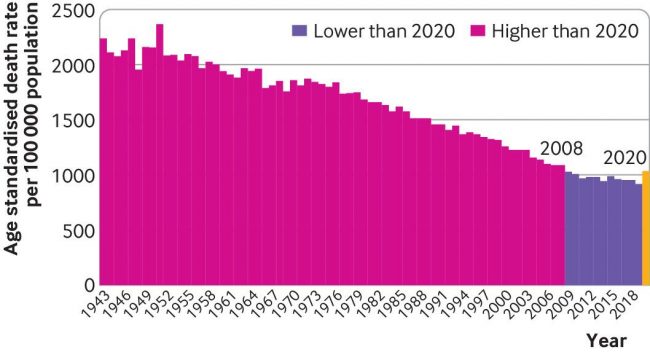
By this measure, 2020 isn’t even the worst year for mortality since 2000.In fact, since 1943 only 9 years have been better than 2020.
Similarly, in the US the ASMR for 2020 is only at 2004 levels:
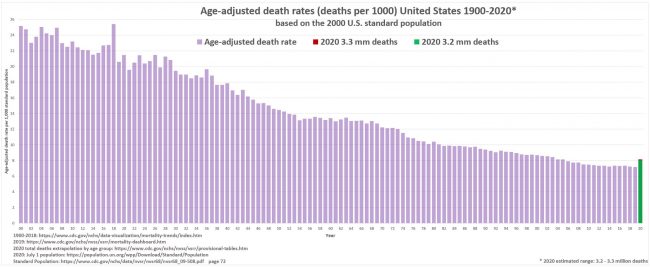
Sweden, which famously did not lockdown, saw their all-cause mortality hit levels previously seen in 2012:
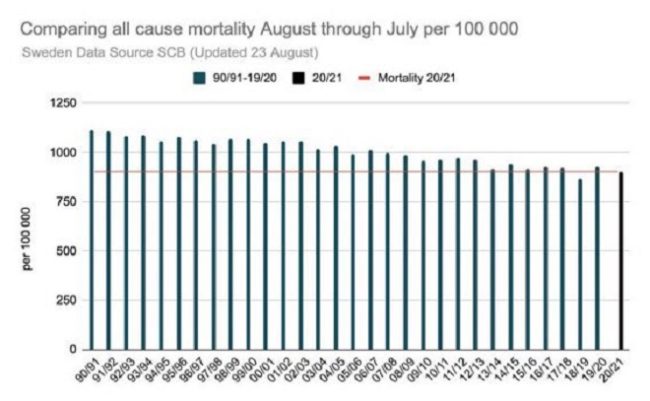
The World Bank’s mortality dataset estimates that 2020 saw the crude global death rate increase from ~7.6 to 8, or a return to the level seen from 2006-2011.
From May of 2021, the World Health Organization began to discuss the “true cost of the pandemic”, promoting efforts to further inflate the pandemic’s death toll by attributing all excess deaths since 2020 to Covid. However, since any increases in mortality could be attributable to non-Covid causes [facts 15, 18, 20 & 28] that is either irrational or intentional deception.
Further, there is strong evidence any excess deaths had nothing to do with “Covid”, since excess deaths have continued to increase even as Covid cases reportedly decline. As reported in the Spectator in November 2022:
Why are excess deaths higher now than during Covid?
It’s not just the UK either, as Toby Green and Thomas Fazi wrote for Unherd on January 30th:
…despite relatively low Covid death rates, overall excess deaths in all age groups in Europe in 2022 were as high as in 2020 and higher than 2021 — even in the oldest cohorts. Beyond Europe, the situation is much the same…
That excess deaths have continued to increase despite the “pandemic” allegedly slowing down is evidence that any excess mortality may never have been caused by “Covid”, but was in fact due to other factors (eg. the economic and social fallout of lockdown policies and potentially the distribution of untested and unnecessary “vaccines”).
Part IX: Planning and Deception
34. The EU was preparing “vaccine passports” at least a YEAR before the pandemic began. Proposed COVID countermeasures, presented to the public as improvised emergency measures, have existed since before the emergence of the disease.
Two EU documents published in 2018, the “2018 State of Vaccine Confidence” and a technical report titled “Designing and implementing an immunisation information system” discussed the plausibility of an EU-wide vaccination monitoring system.
These documents were combined into the 2019 “Vaccination Roadmap”, which (among other things) established a “feasibility study” on vaccine passports to begin in 2019 and finish in 2021:
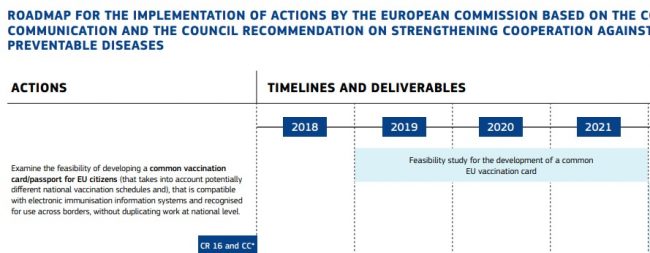
This report’s final conclusions were released to the public in September 2019, just a month before Event 201 (below).
In fact, vaccination and immunisation programs have been recognised as “an entry point for digital identity” since at least 2018.
Founded in 2016, ID2020 is a corporate-governmental “alliance”dedicated to “providing digital identity to all”. In March 2018 the ID2020 published an article headlined “Immunization: an entry point for digital identity”, in which the author argues:
Immunization poses a huge opportunity to scale digital identity
ID2020 was founded jointly by Microsoft, the Rockefeller Foundation and GAVI the Vaccine Alliance. Its “partners” include Facebook, and the UN.
*
35. A “training exercise” predicted the pandemic just weeks before it started. In October 2019 the World Economic Forum and Johns Hopkins University held Event 201. This was a training exercise based on a zoonotic coronavirus starting a worldwide pandemic. The exercise was sponsored by the Bill and Melinda Gates Foundation and GAVI the vaccine alliance.
The exercise published its findings and recommendations in November 2019 as a “call to action”. One month later, China recorded their first case of “Covid”.
*
36. Covid-sceptic world leaders “died suddenly”.Multiple political leaders who opposed the World Health Organization’s Covid policies died unexpectedly, only to see their anti-WHO covid policies reversed immediately by their successors.
On the 3rd of May 2020, President Pierre Nkurunzia of Burundi dismissed Covid as “a hoax”. Three days later the Council on Foreign Relations warned of “dangerous trends in Burundi’s democracy”.
On May 14th 2020 Nkurunzia formally expelled the WHO representatives from Burundi. Less than a month later, he died “of a sudden illness”. His successor labelled Covid “our biggest enemy”, and invited the WHO back.
There was an almost identical situation in Tanzania, where Covid-sceptic president John Magufuli questioned the accuracy of the PCR tests and banned the use of Covid vaccines in his country.
In March 2021, Magufuli disappeared from public view for weeks. Again, the Council on Foreign Relations published an article calling for his removal, and again it was reported he had died suddenly.
His successor reversed course on Covid immediately, enforcing quarantines, social distancing and mask-wearing, as well as signing Tanzania up to the WHO’s vaccine program and jabbing 10 million of her citizens.
*
37. During the “Covid “pandemic”, the Flu almost completely “disappeared”. In the United States, since February 2020, influenza cases have allegedly dropped by over 98%.
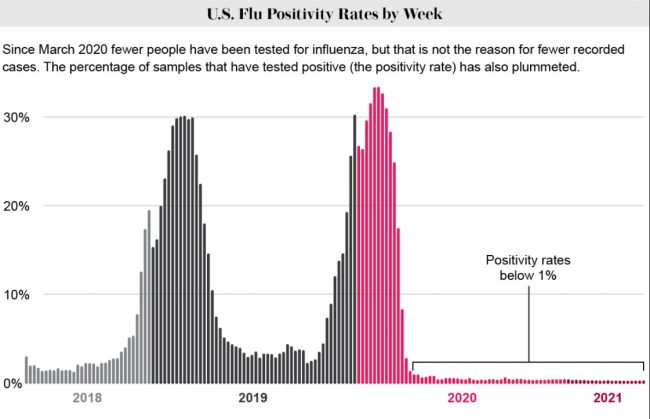
It’s not just the US either, in September 2020 the US CDC reported thatflu activity was markedly decreased in the US, Australia, South Africa and Chile.
In April of 2021, Scientific American published an article headlined:
Flu Has Disappeared for More Than a Year
The explanation given is that anti-Covid measures – eg. masks and lockdowns – stopped flu spreading. But we have established that masks and lockdowns do not halt the spread of respiratory illnesses[14][21].
In short, globally, the flu almost completely disappeared throughout 2020 and 2021, and that cannot be explained by anti-Covid measures.
Meanwhile, a new disease called “Covid”, which has identical symptoms [1] and a similar mortality rate [29] to influenza, was apparently affecting all the people normally affected by the flu.
*
Part X: Profit and Motive
38. The Covid pandemic advanced a pre-existing political agenda. From its earliest days, Covid was used as an excuse to push through reforms of food, identity and monetary systems, as well as advance “green” agendas that centralise both global and national power.
As early as March 2020, former UK Prime Minister Gordon Brown was calling for a “global government” to tackle the pandemic.
The pandemic also saw an increase in censorship and surveillance powers, both in China and the West.
In September 2018, the important role of “digital identity” in the future “social contract” was a major talking point at Davos. By December 2020, The Economist reported that “Covid-19 spurs national plans to give citizens digital identities”.
In January 2019, it was reported the Bank of International Settlements and 70 central banks around the world were involved in research on central bank digital currencies (CBDCs). In July 2021 FinTech times reported that the pandemic had “accelerated the development of Central Bank Digital Currencies by up to five years”,
Throughout 2019, articles and papers called for a “radical transformation” of the global food system. By 2021 Deloitte was reporting that “Covid” had “accelerated food transformation”.
The Grantham Institute of Imperial College, London published an article claiming Covid had allowed expert opinion “a foot in the door” so they could “strongly advocate for a ‘net-zero emissions’ recovery and a resilient future.”
Finally, the pandemic opened the door for sweeping globalist changes to public health policies in the form of the proposed “Pandemic Treaty”.
*
39. Corporations saw MASSIVE profits due to Covid.Companies in multiple sectors saw huge profits due to the “pandemic”, most of which arose from increases in government spending putting public money in private hands.
The global market for facemasks, for example, expanded by over 15000%, from $1.4 billion in 2019 to $225 billion in 2020. And that’s just facemasks, not other forms of personal protective equipment (PPE) which all saw massive increases in both personal and government spending.
In the UK alone, the cost of simply storing this PPE surged to over 1 billion pounds, with another £4 billion worth of unused PPE simply thrown away, and other write-offs totalling nearly £10 billion.
Rubber gloves and hand sanitzers also saw huge upticks in their market thanks to government spending. A lot of this money was completely wasted as products expired.
Amazon saw its profits double thanks to covid, and streaming platforms added millions of new users thanks to lockdowns
However, the biggest profits were seen in the vaccine sector. Since the vaccine rollout, pharmaceutical companies have made roughly $1000 a second.
In late 2019, Pfizer’s revenues were the lowest they had been since 2010, two years later they had increased by 150%, and were the highest they had ever been.
Within months of the vaccine rollout, 9 vaccine manufacturers had becomes billionaires. By May of 2022, that number had risen to 40.
*
40. The elite have made fortunes during the pandemic.It is not just pharmaceutical companies that have profited from Covid, since the beginning of lockdown the wealthiest people have become significantly wealthier.
In October 2020, Business Insider reported that “billionaires saw their net worth increase by half a trillion dollars” in just the first six months of the pandemic.
By April 2021 Forbes was reporting that 40 new billionaires have been created “fighting the coronavirus”.
That process has only accelerated.
As of May 2022, the number of new billionaires created by the pandemic stood at 543. Or roughly one every 30 hours for the previous two years. That includes 40 new billionaires in the pharmaceutical sector alone.
Meanwhile, the share of the world’s wealth held by billionaires has increased from 10% in 2019 to 14% in 2022, a greater increase than the previous 16 years combined.
Altogether, the richest people in the world increased their collective wealth by over five trillion dollars in the past three years, all thanks to Covid.
*
Conclusion
I made a point of saying, in the introduction of this piece, that it was being updated not just in terms of facts but in terms of approach. Now I will clarify.
When the first edition of this list was published, “Covid” was still a live fire exercise. A sprawling propaganda war, where facts were ammunition and supply lines were strained. It needed to be what it was – short, to the point and easily accessible.
These days the pandemic front is a quieter place. A muddy ruin of a battlefield, dotted with bodies and limp banners on broken staves. Left to the scavengers, as both sides prepare for the next big push.
“Covid” is being gently dialled down in preference for talk of Ukraine, climate change, and even “the next pandemic”.
Our world has not returned to “normal” – and likely never will – but while the transformation remains in place, the agent of that initial change is slowly being pushed aside by new fronts in the Great Reset’s war for control of the world.
Now we find there is space – and time – to survey the “Covid” narrative in full, and tell the real story of the “pandemic” that turned the world upside down, in order to better empty its pockets.
The previous edition of this list was left intentionally free of any interpretation on the part of the author. That the facts were left to speak for themselves, and that they did. Indeed, they still do.
But nevertheless, as a closing statement to the worldwide jury, I want to summarize the story these facts narrate to us.
- Through 2017, ’18 and ’19, various international and global bodies put plans in place – or discussed the possibility of – worldwide vaccination drives, including how they could be used to facilitate the introduction of digital passports linked to medical records.
- In late 2019, an international exercise was held focused on a hypothetical zoonotic coronavirus causing a worldwide pandemic and planning a possible response.
- Just two months later, it was claimed that an allegedly real zoonotic coronavirus had begun infecting people. The “new disease” had typical flu-like symptoms and very similar death rate to seasonal flu-like diseases. Coincidentally, in this period cases of flu reportedly dropped to almost zero.
- Tests for this “new virus” were rushed out, skipping the usual peer review process.
- Mass testing of asymptomatic people was used to create “covid cases”, while mass testing of those already dying in hospital was used to create “covid deaths”.
- As a “response” to the “pandemic”, lockdowns were introduced, crippling the economy and causing massive increases in poverty, malnutrition, drug and alcohol abuse and mental health problems. Whilst also ensuring people suffering real health problems would avoid hospitals out of fear.
- Meanwhile, in hospitals, “covid guidelines” resulted in murderous abuse of DNR orders and mechanical ventilation.
- These measures killed people, helping to create the increases in excess mortality which could be officially blamed on “Covid”, but which have not declined despite “Covid cases” reducing in number.
- Masks, and social distancing were enforced on the public – despite their own research showing they are ineffective – in order to increase public fear and acted as literally the only visual evidence anything was happening at all.
- Under the guise of this fake “pandemic”, the greatest single exchange of public money into private hands of all time took place.
- The “pandemic” also allowed for a massive centralisation of power – both on the national and global level. Leaders of almost every nation on Earth seized more power for themselves by playing along, and those who refused were killed.
- Finally, and most importantly, “Covid” allowed for a rapid acceleration of a political agenda which aspires to reshape the world into a dystopian horror show. Digital surveillance, mandated medical procedures, curfews, police brutality and censorship all became further normalised under the guise of “protecting public health”. While programs such as digital currency, “food reform” and “green new deal” policies all saw marked increases in the speed of their development.
These are the vital facts of the pandemic, and they tell only one story. “Covid” was a design. A fake disease, created to sell a very real agenda. This is the only rational explanation of all the evidence we have.
The “official story” doesn’t hold water. If Covid were a real disease and a real pandemic it would not require corrupt testing practices and statistical sleight-of-hand to spread. If it was really deadly, they would not need to rely on statistical manipulation to create “Covid deaths”. If the powers-that-be were being honest they would never have introduced “public health” measures that their own research says don’t work.
The idea it was all a snowball of mistakes – a perfect storm of public panic, governmental incompetence and corporate greed – likewise falls short of an all-encompassing explanation, as it fails to account for the many acts of prolific and deliberate dishonesty, and again asks us to believe that Event 201 was merely a coincidence.
The “lab leak” or “bio weapon” theory – that “Covid” is a real disease either accidentally or deliberately released on the public – does not fit either, neither factually or logically. Factually, as with the official version, a real virus would not require fake statistics to spread. While logically, there is the problem of control.
As Mike Yeadon put it in his recent article:
the effect of a released novel pathogen couldn’t be predicted accurately. It might burn out rapidly. Or it might turn out to be quite a lot more lethal than they’d expected, demolishing advanced civilisations.
No, the only story which holds together is that “covid” was a psychological operation on a global scale. The biggest and broadest propaganda campaign of all time, with the singular aim of breaking the world apart, and remaking it in a new globalist image.
In fact, they kept telling us this was the case. A “great reset” in order to “build back better” towards a “new normal”. They made no secret of their intention:
“Covid” was – and is – a deceptive means to a malignant end. We need to see that, understand it, and remember it. Because unless we properly disect and comprehend the scale and methodology of this propaganda, we will be similarly vulnerable to the same methods the next time they are deployed.
While the means may be retired, the end will always remain.
Their new world exists now, all around us. But it is only half-built, and the distinct and final aim of everything they do and say moving forward will be working to its completion.
That’s the silver lining of “Covid”, if you want to find one. For want of a better analogy, the mask has slipped. We caught a glimpse of Zappa’s brick wall. Now we know what they really want.
They want control – over everything and everyone. They want to reduce us – reduce our intellects, our means, our health and our rights. They want to accelerate our slow crawl to tyranny and build a global work camp surrounded by imaginary evils that hypnotise the inmates into thinking the barbed wire is for their own good…because it keeps the monsters out.
Simply put, they want to finish what “Covid” started. But as long we see them, and understand them, they will never be able to.
*
Note to readers: Please click the share buttons above. Follow us on Instagram and Twitter and subscribe to our Telegram Channel. Feel free to repost and share widely Global Research articles.
Featured image is from OffGuardian


 The Worldwide Corona Crisis, Global Coup d’Etat Against Humanity
The Worldwide Corona Crisis, Global Coup d’Etat Against Humanity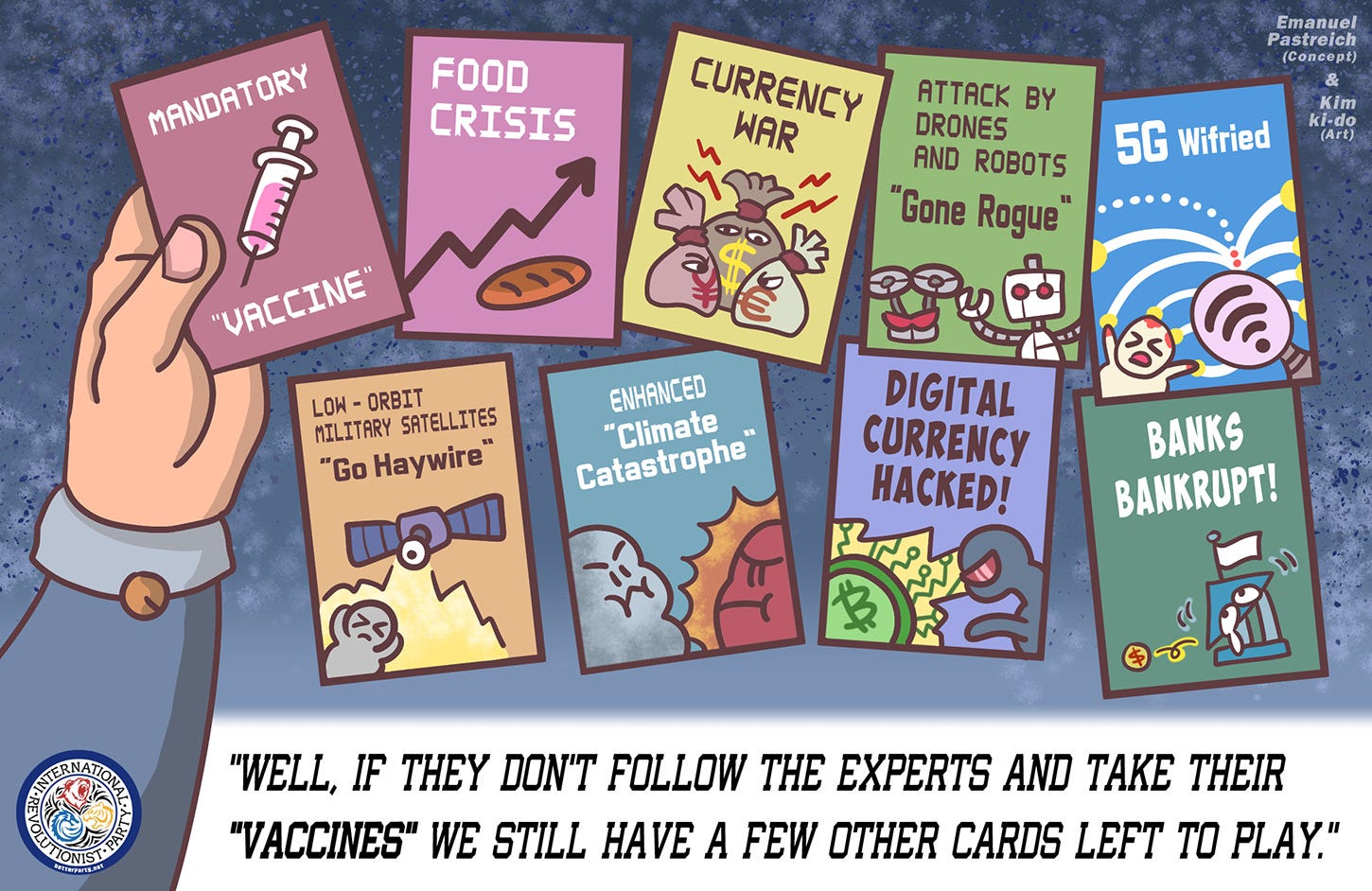


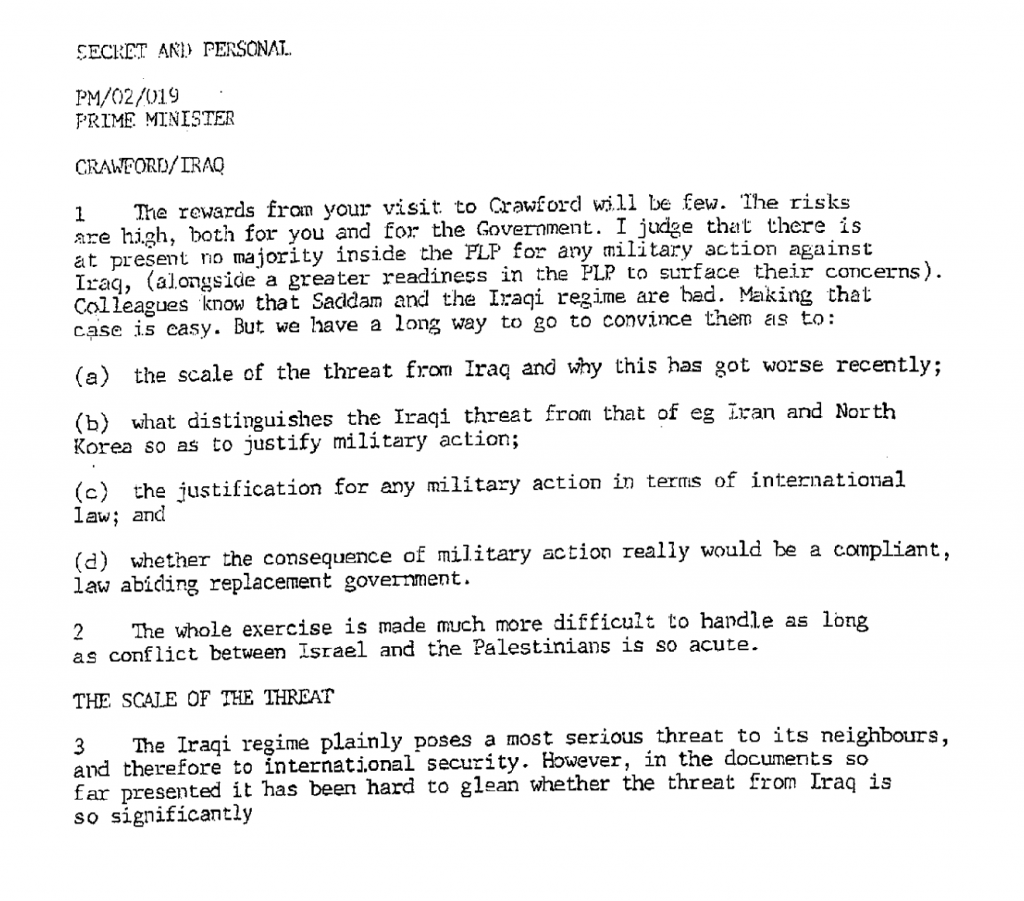



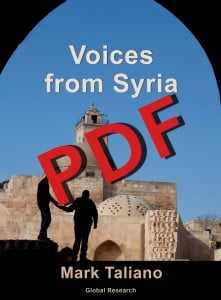
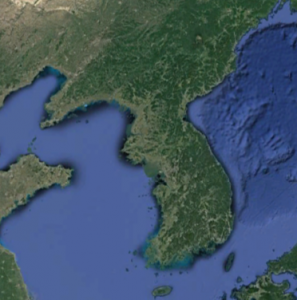


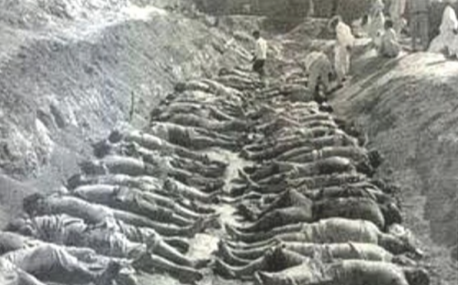
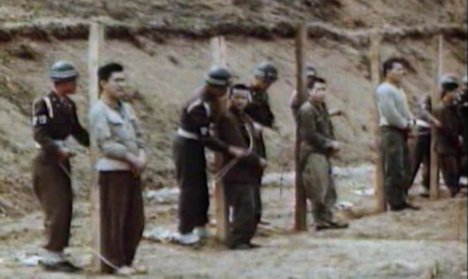
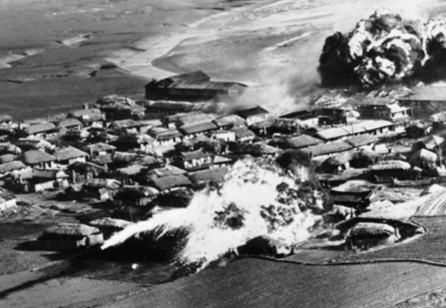
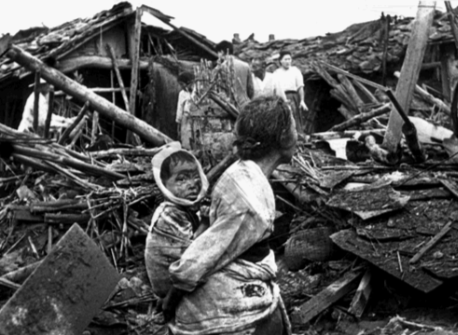


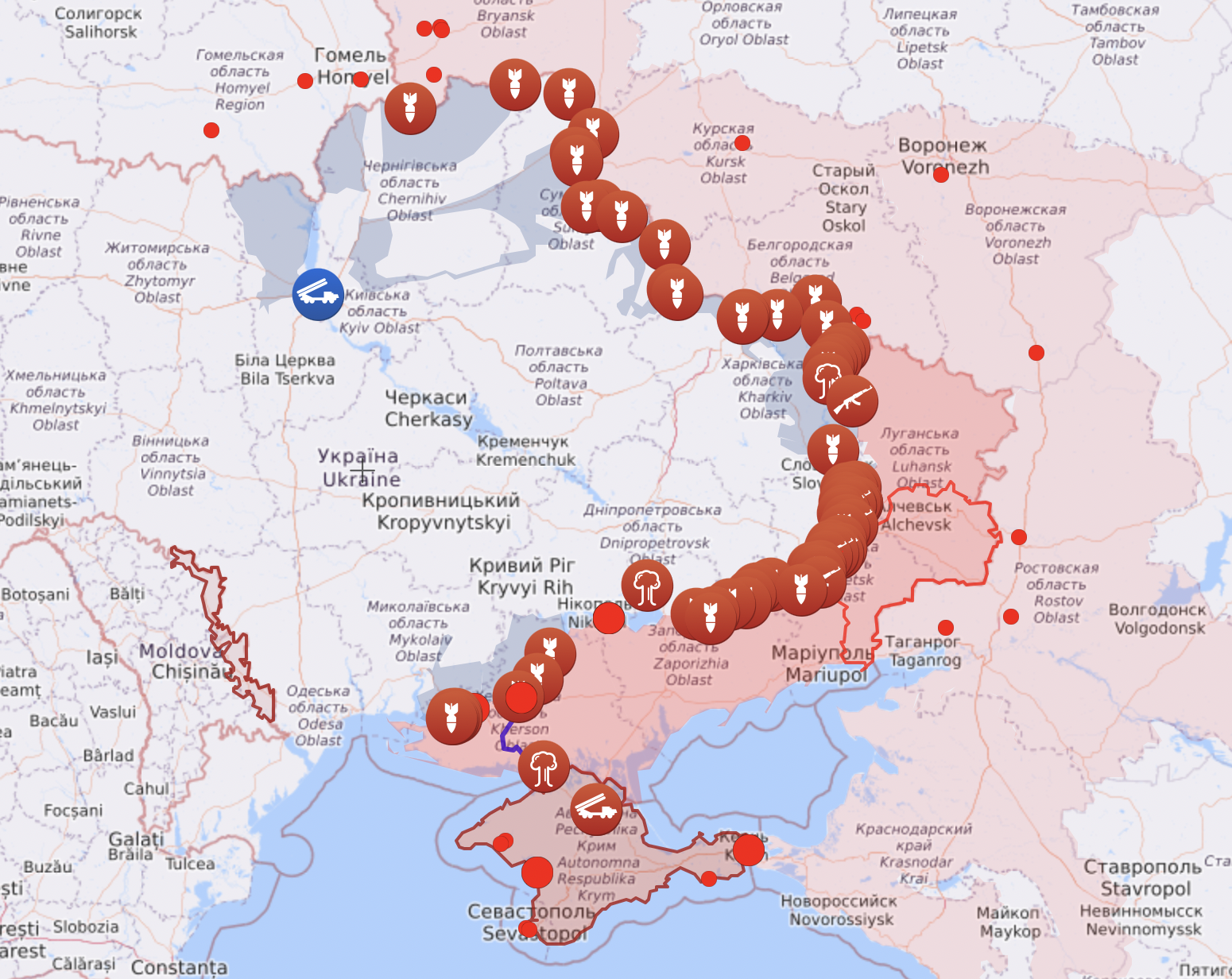

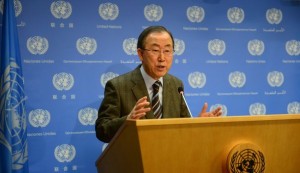




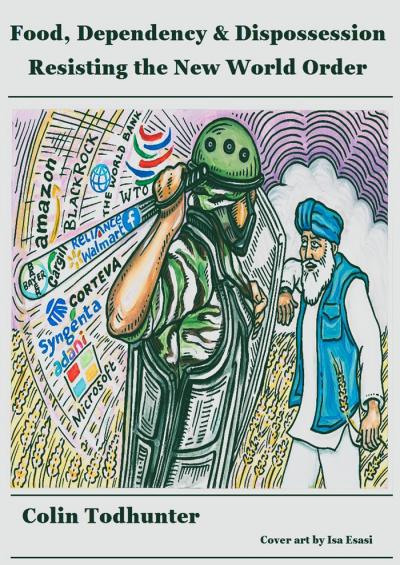 Read Colin Todhunter’s e-Book entitled
Read Colin Todhunter’s e-Book entitled

